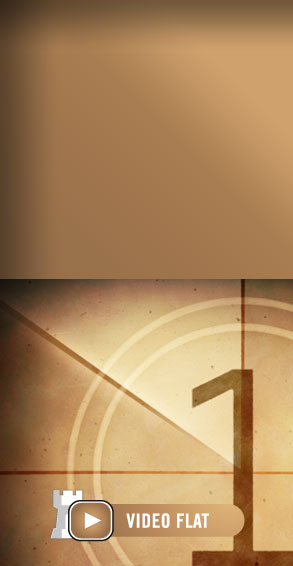 Jan
Gustafsson: The Marshall Attack
Jan
Gustafsson: The Marshall Attack
By Carsten Hansen
Black Repertoire against 1 e4, Vol. 1: The Marshall Attack by Jan
Gustafsson, ChessBase GmbH 2010, Figurine Algebraic Notation, DVD, Running Time:
3 hours 45 minutes, $38.95 (ChessCafe Price: $32.95)
German grandmaster Jan Gustafsson is one of the top experts on the Marshall
in top-level chess nowadays. With a rating of 2646 (at the time of production)
and having worked with former world championship challenger Peter Leko, he is
a very strong player with a reputation as a theoretician and analyst. Aside
from this, it emerges on the DVD that he has a tremendous sense of humor, enabling
him to make a rather entertaining presentation from the countless long lines
in the Marshall Attack.
Gustafsson plays down the fact that the lines are long and complicated, and
the need to understand the nuances to a very large degree, by saying that he
himself can't remember everything and that it has never been a problem, even
when playing the Marshall against 2600-2700 opposition.
Gustafsson's English is more or less flawless. He speaks clearly and confidently
and peppers the presentation with humorous quips. One example is "It is now
4 a.m. in the ChessBase headquarters, so it is the last video for tonight before
they let me sleep in corner for two hours. So you will be able to tell that
in the next video I might be wearing different clothes if I have to change tomorrow
in the morning."
The material is divided as follows:
- Intro
- Marshallattack: [sic]
- 1 e4 e5 2 Nf3 Nc6 3 Bb5 a6 4 Ba4 Nf6 5 0-0 Be7 6 Re1 b5 7 BLb3 [sic] 0-0
8 c3 d5
- Intro
- Old Main Linee [sic] 15 Be3
- 15 Re4 g5 16 Qf3 and 16 Qe2
- 15 Re4 and 16 Qf1
- 15 Qe2
- 12 d3
- 12 Re1 and 13 g3
- Marshall Sidelines
- Antimarshall: [sic]
- 1 e4 e5 2 Nf3 Nc6 3 Bb5 a6 4 Ba4 Nf6 5 0-0 Be7 6 Re1 b5 7 Bb3 0-0
- Antimarshall [sic] intro
- 8 h3 Bb7 9 d3 d5
- 8 h3 Bb7 9 d3 d6 10 a4 and 10 c3
- 8 h3 Bb7 9 d3 d6 10 a3
- 8 a4 b4 9 d4 and 9 a5
- 8 a4 b4 9 d3
- 8 d4
- Antimarshall [sic] Sidelines
The material is mostly for players with an ELO of 1900 or more. It is an unnecessary
investment of time for weaker players to spend countless hours trying to understand
and memorize lines where the theory doesn't end until move thirty or beyond.
Moreover, the most significant developments have happened in recent years, and
this can make it difficult for the average player to navigate the theory without
losing sight of the overall situation.

Nevertheless, Gustafsson makes the presentation easy to follow by not overloading
the viewer with too many lines: just enough to make the viewer feel comfortable
that not too much is left unsaid. It seems by Gustafsson's casual attitude that
he is making the entire presentation from memory. His recommendations, and the
fact that he only discusses the lines relevant to the proposed repertoire, makes
the viewer's task somewhat more manageable.
Gustafsson delivers a few, but very high quality novelties that will definitely
make Black's life easier. He also provides additional insight to why he considers
certain lines to be less attractive. Should the viewer need a deeper knowledge
of the theory of the Marshall than what Gustafsson discusses, then additional
theory and analysis is provided in the games section on the DVD.

The prospective student will be well served by investing in both this DVD and
the Vigorito book reviewed above to have both Gustafsson's repertoire guidance
and the book's larger volume of theory. Before we conclude, I want to present
a game where Gustafsson beats the highest-rated German player down with a heavy
Marshall stick. Gustafsson admits that the entire game came from home preparation,
but that doesn't make it any less stunning. The annotations are those by Gustafsson
from the brand new Mega Database 2011 to which I expect to return in the February
column.
Naiditsch, Arkadij (2654) – Gustafsson
Jan (2588) EU-ch 8th Dresden (8), 11.04.2007
It feels a little silly to annotate a game in which I didn't make a single
move on my own, just following my preparation all the way. It also might look
like the only games I'm ever giving comments on are my wins against Naiditsch.
Its nothing personal, he just happens to be the only decent player I beat once
in a while! And since this game was crucial for me qualifying for the World
Cup and is sort of pretty too, I hope the reader will forgive me for my lack
of creativity over the board.
1.e4 e5 2.Nf3 Nc6 3.Bb5 a6 4.Ba4 Nf6 5.0-0 Be7 6.Re1 b5 7.Bb3 0-0

[CH: This is the starting position of this DVD]
No surprises so far. I've hardly been playing anything but the Marshall recently,
and whilst Arkadij has tried the Italian or the exchange Spanish once in a while,
he also sticks to the mine line this time.
8.c3. Allowing the Marshall! Few players have dared to enter
it in the last games I've seen, and personally I'd just be way to afraid to
get checkmated as White too. Then again, the alternatives 8.h3 and 8.a4 don't
seem to offer that much either, so this is obviously the critical choice.
8...d5. No more chickening out! 9.exd5 Nxd5 10.Nxe5
Nxe5 11.Rxe5 c6
[CH: Note that this is the only version of the Marshall Attack that is
covered on the DVD. Two alternatives are Marshall's original choice, the dubious
11…Nf6?!, and the interesting, but still rather rare 11…Bb7.]
12.Re1. Not the main line, but White reserves the right to
transpose of course. 12.d4 Bd6 13.Re1 Qh4 14.g3 Qh3 15.Be3 Bg4 16.Qd3 Rae8 17.Nd2
Re6 18.Qf1!? Qh5 19.f3 was the way Kramnik beat Aronian in their recent match
and might become the new fashion?
12...Bd6 13.g3. This is a clever move order actually. Whites
point is that after the normal 13...Qd7, he goes 14.d3! Qh3 15.Re4, tricking
Black into a slightly unfavourable line. So we need another way...
13...Bf5! 13...Bh3 was my choice against Nisipeanu, but I
wasn't too happy with it after the accurate 14. d3!.
14.d4 Qd7. From just looking at the position, it feels like
Black should have enough play here. However, looks mean little nowadays, so
I was basically happy to (accidentally) be very familiar with this variation...
15.Be3 Rae8 16.Nd2 Bg4 17.Qb1 Bf5
So far were following some heavyweight games from the likes of Anand and Aronian.
Whites next move is when it really becomes interesting.
18.Bc2? This move was recommended in Informant some time ago,
giving some analysis claiming that White is much better here. This matter came
to my attention when GM Gyimesi wrote me a "panic" email about this line. We
had studied the Marshall together some time ago and I guess I got lucky he brought
this to my attention , as I actually had to have a look at it and managed to
find a pretty convincing recipe. I guess we won't see much of 18.Bc2 after this
game anymore, as it might be already the losing mistake! 18.Qc1 is the main
line, when Black has a choice between 18...h5 (18...Re7; 18...Re6 all of which
seem to offer fair compensation.)
18...Bxc2 19.Qxc2 f5. At this point I already knew there was
quite a high chance I was gonna checkmate him in a couple of moves. So I became
sort of nervous and starting wondering if I should spend some time acting or
just play the moves quickly. I went for an intermediate approach, taking some
time, but not a lot. Cause you never know what happens, I might need the time
later... I also felt this was a pretty good training for my poker face, something
I definitely gotta work on.
20.c4? This is White's point. 20.Nf3 is better, but hardly
something to write home about after ... f4.
20...bxc4!N. A fairly obvious novelty. Earlier, 20...Nf6 was
played, giving White an edge after 21.Bg5.
21.Nxc4 f4 22.Bd2 f3. This is the first move not mentioned
in Chess Informant. Again its pretty obvious, but the key is the next move.
Nowadays engines spot it very quickly, but when I was looking at it some two
years ago, it actually required some brain power... 22...Bc7 23.Rxe8 Rxe8 24.Qd3+/=.
23.Qd3. 23.Kh1 Qh3 24.Rg1 Re2 25.Raf1 Bxg3-+.
[CH: Here Gustafsson gives the viewer a few seconds to find the winning
combination – see if you can spot the combination before moving on.]
23...Re2! This is the key. Black blocks the white queen on
her way to f1 and manages to get to the king. I was very happy when I found
this idea, but it turned out I didn't need to. Preparing for the game, I followed
my routine of visiting my friend Peter Heine Nielsen to annoy him with question
about the latest theory developments. He said: "Well there is this one Marshall
line you should know about, 18.Bc2. " And I was happy to replay "Oh, that doesn't
work, Re2 and mate" – "OK, no more questions". I'm glad I actually knew about
it beforehand, else I would owe Peter even more payback for opening ideas then
I do already. And since coaching him in Poker hasn't yet netted the results
I was hoping for, I'm running out of ideas how to pay him back...
24.Rxe2 Qh3 25.Ne3. After this its curtains immediately. 25.Qxf3
Rxf3 26.Nxd6 Nf6 27.Rae1 h6 (27...Ng4?! 28.Re8+ Rf8 29.Rxf8+ Kxf8 30.Re8#) 28.Re3
Rxe3 29.fxe3 (29.Bxe3 Ng4 30.Nc4 Nxh2 31.Ne5 g5 32.g4 h5 33.gxh5 g4) 29...Ng4
30.Re2 Nxh2 31.Rxh2 Qxg3+ 32.Rg2 Qxd6 is fairly hopeless for White too, though.
25...Rf4! 0-1.
A pretty finale. I was obviously hoping for the beauty prize sacrificing both
my rooks and all, but OK, Im afraid requirements are one makes a move of his
own for that it seems. Something I could avoid doing in the last five rounds
in Dresden. Silly game, this chess. Oh wait, maybe its just me? 25...Rf4 26.Qxa6
(26.gxf4 Bxf4) 26...Rh4 27.Qa8+ (27.Qc8+ Qxc8!) 27...Kf7 28.Qe8+ Kxe8 29.Ng2+
fxe2 30.Nxh4 avoids the mate, but isn't really worth playing on.; 25...Rf6?
26.Qe4.
The DVD is mainly for an audience of 1900 and above, but even very strong players
will be able to benefit from the guidance and analysis provided.
Source: Chess Cafe. The review
page of Carsten Hansen includes discussions of
- Beating 1 e4 e5 by John Emms
- Understanding the Marshall Attack by David Vigorito
- Black Repertoire against 1 e4, Vol. 1: The Marshall Attack (DVD)
by Jan Gustafsson
- Black Repertoire against 1 e4, Vol. 2: The Open Games (DVD) by
Jan Gustafsson
- Killer French Defence: Advanced and Tarrasch Variations (DVD) by
Simon Williams
- Killer French Defence: Winawer, Exchange, KIA & Other Possibilities
(DVD) by Simon Williams



















 Jan
Gustafsson: The Marshall Attack
Jan
Gustafsson: The Marshall Attack




